Pleurotus ostreatus: the oyster mushroom
2 years ago · Updated 6 months ago
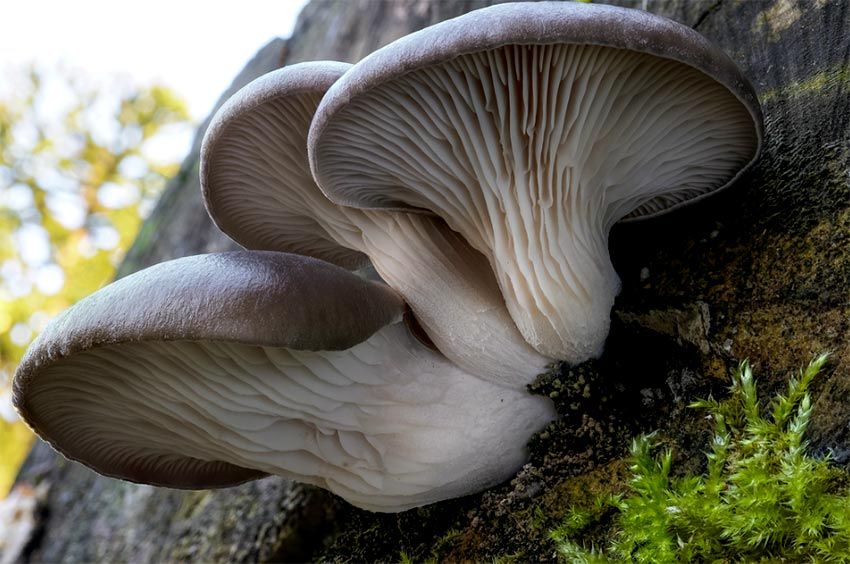
- Pleurotus ostreatus, oyster mushroom or oyster mushroom
- Names of oyster mushrooms or oyster-shaped mushrooms
- Characteristics of Pleurotus ostreatus or oyster mushroom
- Where do oyster mushrooms grow?
- Can I confuse Pleurotus ostreatus with another poisonous mushroom?
- How to grow oyster mushrooms
- Oyster mushrooms in the kitchen
- Oyster Mushrooms in Cooking: Delicious and Nutritious
- Medicinal properties of oyster mushrooms
- For which conditions is consumption of Pleurotus ostreatus recommended?
Pleurotus ostreatus, oyster mushroom or oyster mushroom
Its ease of cultivation is one reason, but its delicious flavor is undoubtedly another important factor. We reveal its secrets and how to find it growing in the wild.
Names of oyster mushrooms or oyster-shaped mushrooms
As with many other mushroom varieties, its scientific name refers to its morphology (ostreatus, oyster-shaped). But the same is true of its many popular names.
Thus, it can also be found under names such as Orellana, concha, gírgola, champignon huître, bolet d´orella, oreja de palo, belarri landu... There are many names in the languages of the Iberian Peninsula as well as in other countries. In English, it is called oyster mushroom and in French pleurote en huître
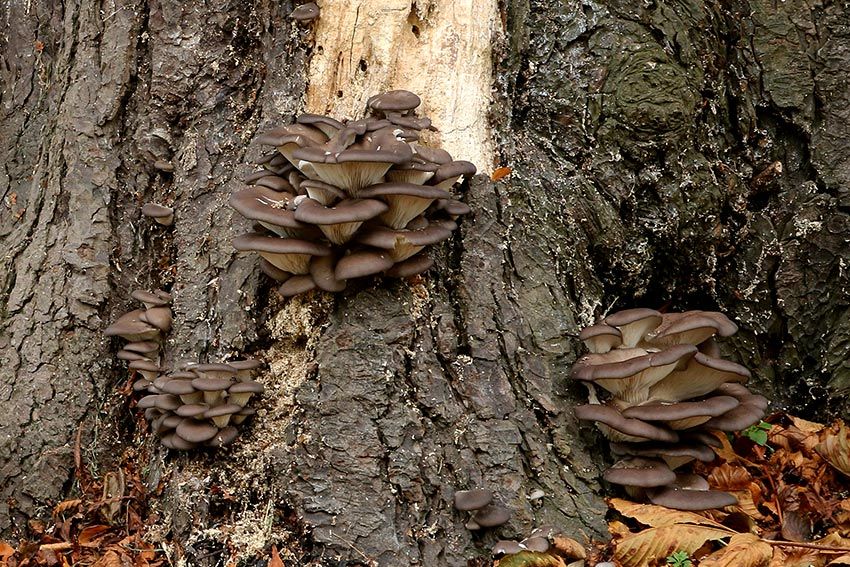
Characteristics of Pleurotus ostreatus or oyster mushroom
This is a very easy to recognize mushroom that we have seen countless times on supermarket shelves. Along with button mushrooms and shiitake, they are the most widely consumed cultivated mushrooms.
We will list some of the main characteristics of oyster mushrooms so that we can recognize them if we find a log in the mountains covered with them.
- Cap: It is a large mushroom, between 4 and 20 cm and even larger. The cap is flattened, resembling a shell or an oyster. The edges are rolled and tend to open in mature specimens. The color of the cap is quite variable. We can find specimens ranging from light gray to leaden, to brown and even bluish tones
- Gills: Irregular, long, decurrent and fairly close together. White or light cream in color, darkening with maturity
- Stem: It is clearly off-center and small. Sometimes it may appear to be missing even though it grows very close to the substrate or trunk
- Flesh: Thick and firm. Almost white in color with a very pleasant smell and taste.
Where do oyster mushrooms grow?
Pleurotus ostreatus is a saprophytic mushroom. This means that it grows as a parasite on decaying wood, preferably on softwood and deciduous tree species. It can therefore mainly be found on beech, willow, or poplar trunks. It also grows on elms and poplars.
Sometimes it grows on stumps or fallen trunks in the forest. But it also grows parasitically on living trees. If we are looking for other species of mushrooms, we need to pay attention when we see it.
It also grows on the highest part of living tree trunks, so we will need to look up from time to time. This is because we may be standing under a mushroom patch without realizing it.
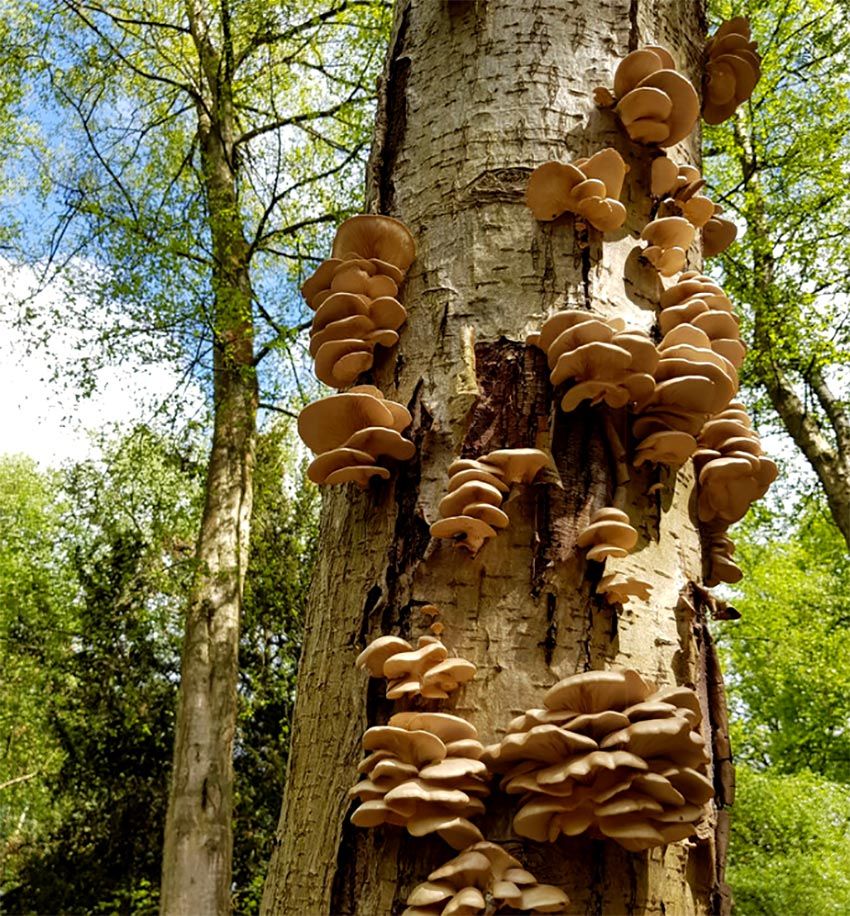
If we are near rivers or streams, we must be vigilant, especially in the shadiest areas.
If we are lucky enough to find some, it is not uncommon to fill the mushroom basket. They tend to grow in large numbers. The specimens are very close together and often join at the base.
When can we find wild oyster mushrooms?
In this sense, the season for oyster mushrooms and Orellana mushrooms is quite long. We can find them from spring to fall. However, periods of high temperatures and the first frosts will mark their decline.
Can I confuse Pleurotus ostreatus with another poisonous mushroom?
It is very difficult to confuse the oyster mushroom with any other mushroom. In any case, with other species of pleurotus, which are also edible and sold commercially, such as Pleurotus pulmonarius, which is lighter in color and has a smaller stem, and Pleurotus cornucopiae, which is smaller and almost white in color.
Perhaps the most common confusion is due to the poor nomenclature used by large supermarkets. It is often found labeled as king oyster mushroom (P. eryngii), although these are two species of edible mushrooms that are quite different from each other.
How to grow oyster mushrooms
Gírgola or Orellana is one of the easiest species to grow, and it is not uncommon to find small mushroom kits like this one in home kitchens for growing your own fresh mushrooms.
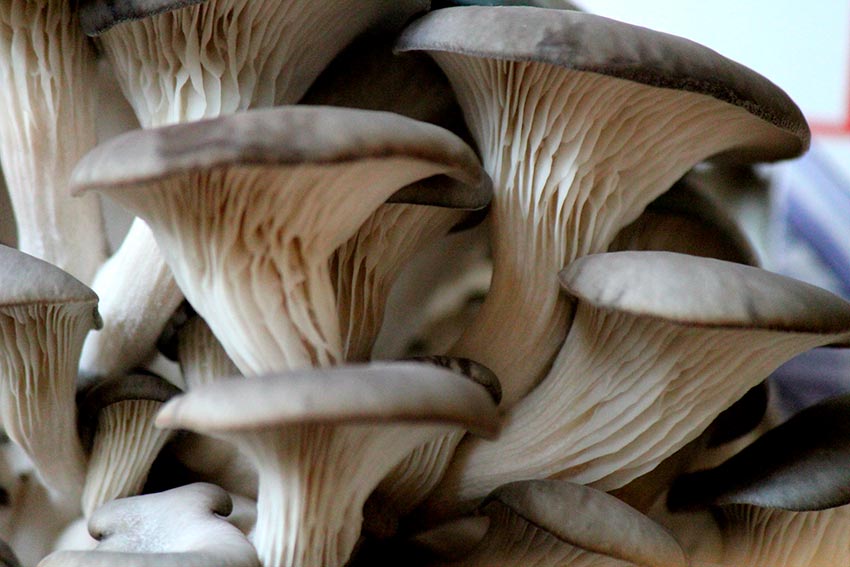
To grow batches of oyster mushrooms at home, a dimly lit room will suffice. These mushrooms need this for their development
The substrate they need to grow must be rich in lignin and cellulose. Leaves, sawdust, and straw are therefore widely used for their cultivation. However, for some time now, oyster mushrooms have been grown on coffee grounds, rice husks, and cotton waste.
If you want to grow your own oyster mushrooms, we recommend visiting our online store.
Photographs of Pleurotus ostreatus, oyster mushrooms
Being able to take photos of a group of oyster mushrooms growing on a log in the forest is a wonder of nature. It is no surprise that we can find beautiful images of Pleurotus ostreatus with its distinctive oyster shape.
Oyster mushrooms in the kitchen
We are talking about a mushroom that is considered an excellent edible mushroom that is highly prized and widely consumed. Some experts consider it to be of lower quality than its sister, the king oyster mushroom or Pleurotus eryngii. However, if cooked properly, the difference in quality is hardly noticeable. In addition, its ease of cultivation makes the Orellana mushroom very common in recipes throughout our region.
Would you like to buy oyster mushrooms for cooking? Visit our section dedicated to this delicious mushroom. You can buy it in powder form, dehydrated or canned
Its delicate flavor makes it a popular ingredient in appetizers. It is delicious grilled, sautéed with garlic or asparagus, or even in salads.
Oyster Mushrooms in Cooking: Delicious and Nutritious
Oyster mushrooms, known scientifically as Pleurotus ostreatus, are a culinary treasure that has gained popularity in recent years. These mushrooms are not only delicious, but also have unique organoleptic properties and an impressive nutritional profile. In this article, we will explore why oyster mushrooms deserve a place in your kitchen and provide three irresistible recipes so you can enjoy them to the fullest.
Organoleptic and Nutritional Properties
- Umami flavor: Oyster mushrooms have an intense umami flavor that makes them ideal for adding a touch of deep, satisfying flavor to your dishes. Their taste is often described as mild, earthy, and slightly nutty.
- Juicy and meaty texture: The meaty and juicy texture of oyster mushrooms makes them a perfect substitute for meat in many recipes. When cooked properly, they can take on a texture similar to that of tender meats.
- Low in calories and fat: Oyster mushrooms are low in calories and fat, making them a healthy option for those looking to maintain a balanced diet.
- Rich in nutrients: These mushrooms are an important source of protein, dietary fiber, vitamins (such as vitamin D, B6, and folic acid), and essential minerals such as potassium, phosphorus, and selenium.
Medicinal properties of oyster mushrooms
Pleurotus ostreatus is widely used in traditional Asian medicine. It is known in Japanese as Hiratake and in Chinese as Pin-gu or Tian hua xin.
Oyster mushrooms are highly prized for their flavor and aroma in both Western and Eastern cuisine. Nutritionally, in addition to its protein content, it is notable for its relatively high levels of B vitamins, vitamin D, and zinc.
Pleurotus ostreatus in Traditional Chinese Medicine (TCM)
This mushroom is widely used in China as a muscle relaxant, especially for muscle spasms and tendonitis. It is also used for lower back pain and muscle pain in general. It is considered to counteract excessive cold and the energy blockages resulting from this excess.
Properties of Pleorotus ostreatus
- Cholesterol-lowering action
- This is the most important action of the mushroom and its extract, as it contains a significant amount of lovastatin, a natural statin that does not have the undesirable side effects of chemical statins. Tests have shown that consuming 10% of the mushroom in a normal diet reduces blood cholesterol by up to 35% while increasing HDL levels.
- Anti-atherosclerosis action
- The effect of ingesting this mushroom on atherosclerotic plaque was measured in comparison with a control group, showing not only a reduction in the thickness of the plaque, but also an improvement in coronary lesions and fibrotic myocardial tissue.
- Antitumor action
- It contains a lectin that has shown powerful antitumor activity in laboratory mice with sarcoma and hepatoma. In addition, 5% of the mushroom was added to the normal diet of laboratory mice, resulting in a reduction in breast tumors and sarcoma. An aqueous extract of the same mushroom showed cytotoxic activity against prostate carcinoma cells.
- Antioxidant action
- Tests on laboratory mice have shown that ingesting this mushroom increases the activity of SOD, glutathione peroxidase, and glutathione reductase. This antioxidant activity not only prevents damage caused by free radicals, but also acts on lipidoxidation.
- Liver protector
- Liver function was restored in damaged mouse livers following ingestion of the mushroom as part of the normal diet.
- Antiplatelet agent
- This action of the extract is attributed to its adenosine diphosphate (ADP) content.
- Anti-inflammatory
- Anti-anemic
- The mushroom is rich in bioavailable iron, and in vitro tests on laboratory animals have shown significant increases in hemoglobin levels.
As with all mushrooms with medicinal properties, it is important to remember that they should never be used as a substitute for prescribed treatment. They should not be administered to people undergoing anticoagulant treatment. Nor should they be taken during pregnancy or breastfeeding, or given to children under the age of 6. And, of course, if there is an intolerance to the consumption of other mushrooms.
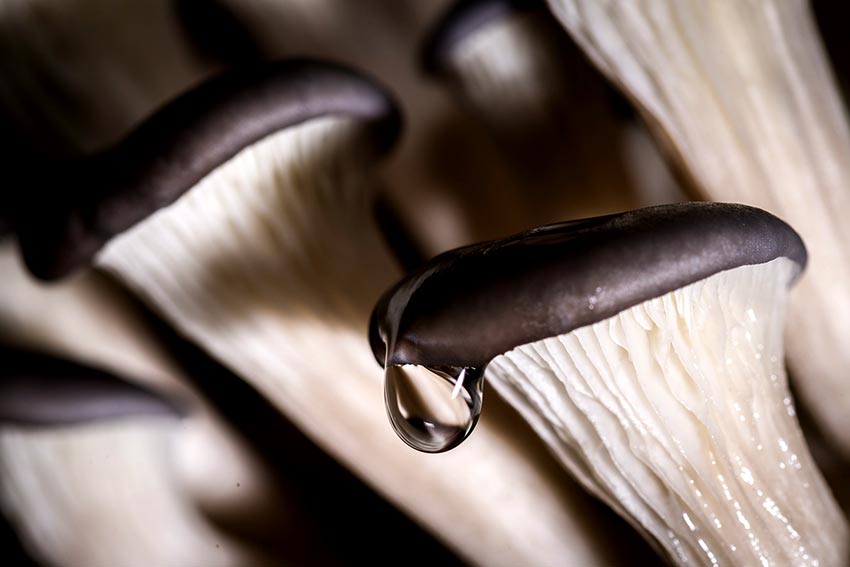
For which conditions is consumption of Pleurotus ostreatus recommended?
- Hypercholesterolemia and dyslipidemia in general Atherosclerosis
- Liver problems
- Prevention of thrombosis
- Prevention of ischemia – myocardial infarction, stroke (cardiovascular accidents)
- Anemia
- Antitumor, with special action on:
- Breast, liver, and prostate cancer
Did you expect mushrooms from the supermarket to have so many properties?
Health and mushrooms!

Te pueden interesar